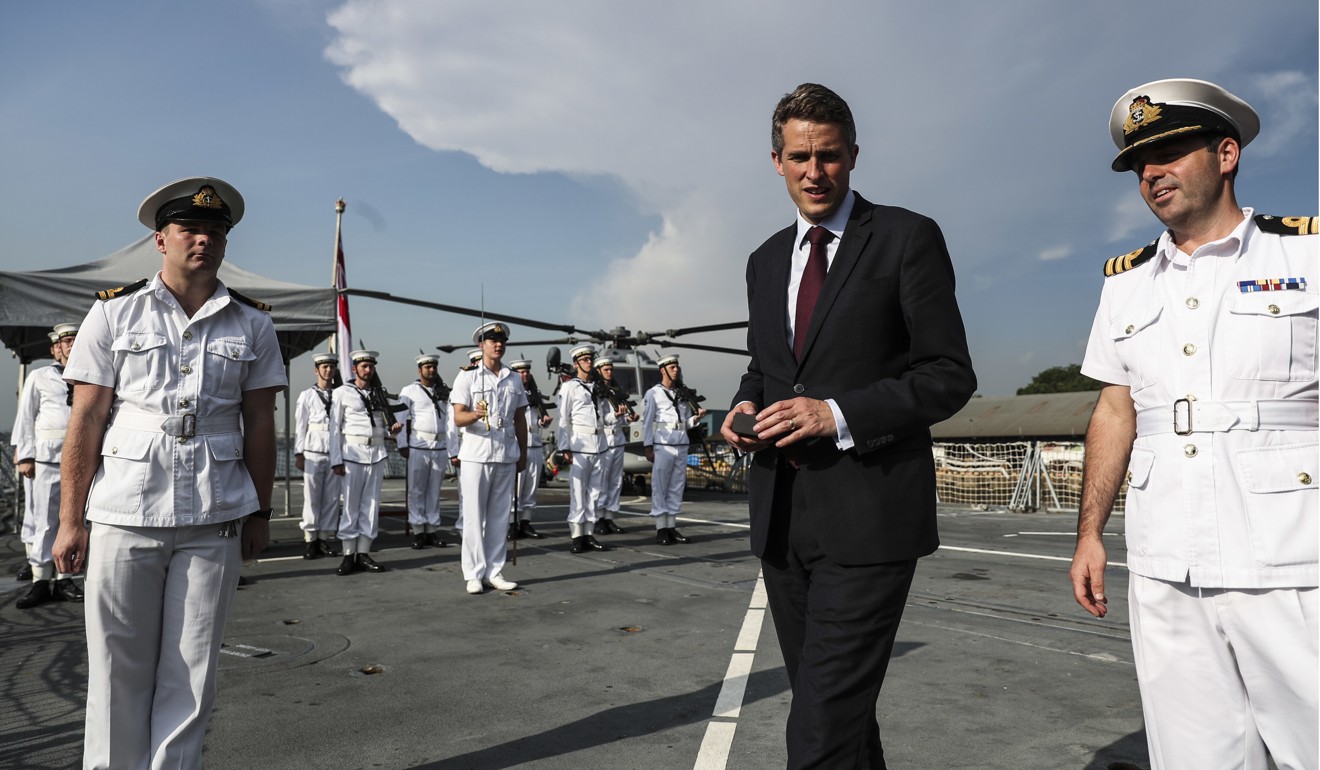French and British navies draw closer in the Pacific. Should China worry?
Emanuele Scimia says while France and Britain are jointly stepping up their military presence in regional waters, it’s not a given they will fully back America’s muscular position against China in the South China Sea

French and British top defence officials had some stinging words for China at the annual Shangri-La Dialogue in Singapore on Sunday. Despite growing trade tensions between the United States and the European Union, France and Britain voiced strong support for Washington’s efforts to counter Beijing’s military ascendancy in the South China Sea. But theirs is not simple rhetoric. Franco-British naval cooperation in the region is already a reality, and could grow even further.
Paris and London view themselves as legitimate Indo-Pacific powers and are working together to assert the right of free passage in international waters and a rules-based order in the South China Sea. French Defence Ministry Florence Parly said the two countries had a common vision of Asian affairs, and Brexit, Britain’s process to exit from the EU, would not modify that consensus.
In a veiled swipe at China, Parly added that French and British naval forces would sail together through “certain areas” in the South China Sea, where China has conflicting claims with several neighbours, and the US routinely conducts freedom of navigation operations close to the islets, rocks and reefs occupied and militarised by Beijing.
Watch: US Navy continues South China Sea patrols despite Beijing’s opposition
France and the UK are evidently stepping up their military presence in the Indian Ocean and Pacific waters. Parly highlighted that five French ships sailed in this vast region last year, and that Paris aimed to broaden its naval activity there.
For his part, British Defence Minister Gavin Williamson emphasised that the amphibious assault ship HMS Albion, the fleet flagship of the Royal Navy, and the anti-submarine frigate HMS Sutherland were currently deployed in East Asia to ensure maritime security, protect free trade and enforce nuclear-related sanctions on North Korea. In addition, HMS Argyll, another Royal Navy anti-submarine frigate, will be sent to the area later in the year.
HMS Albion joined the French-led Jeanne d’Arc naval task force in the Java Sea in April. The encounter in the Southeast Asian waters was hailed by the British side as a demonstration of the global reach of UK-French maritime collaboration.
HMS Albion recently met up with the @MarineNationale’s Jeanne D’Arc Task Group in the Java Sea, demonstrating the global reach of UK-French naval cooperation. pic.twitter.com/4qoJTeGpEq
— HMS Albion (@hms_albion) April 24, 2018
The annual Jeanne d’Arc patrol and training mission sees the Royal Navy’s participation for the second year in a row. British troops, with two Wildcat helicopters, are now embarked on the French amphibious assault ship FS Dixmude.
French and British systems of alliances and partnerships in the Indo-Pacific arena are virtually overlapping, and include regional actors that look with concern at China’s military rise, be it India, Japan, Australia, New Zealand or Beijing’s neighbours in Southeast Asia (Vietnam, Singapore, Malaysia and Indonesia).
Watch: China’s air force conducts combat exercises
The pair is also committed to improving operational cooperation. They can share their network of military bases and logistical facilities from the western Indian Ocean to the South Pacific. What’s more, France is ready to extend its strategic cooperation with India to third parties like Britain. It is worth noting that in March, France and India signed a deal allowing French and Indian armed forces to use each other’s naval bases in the Indo-Pacific region.
London plans to embark one of its two future aircraft carriers (HMS Queen Elizabeth and HMS Prince of Wales) on a permanent deployment in the Indo-Pacific waters in the 2020s. But the British government is expected to slash military spending after the conclusion of an announced defence review.
To balance the books, the administration of Prime Minister Theresa May could decide to strip the Royal Navy of its two amphibious attacks warships, HMS Albion and HMS Bulwark, along with a number of Royal Marines. In that case, as the two new aircraft carriers could be unable to run amphibious operations, Britain may seek the help of France to offset such an operational deficiency.

London believes the Franco-British joint expeditionary force would be fully operational by 2020, enabling the two navies to launch joint operations “at short notice anywhere in the world”. The deployment of Royal Marines on board French amphibious landing boats could become a routine affair if the UK were to decommission its two amphibious vessels. This means the Royal Navy may have to rely on its French counterpart to expand London’s footprint in the Indo-Pacific area after Brexit.
The confrontation between the US and China in the South China Sea is heating up. US Defence Secretary Jim Mattis said at the Shangri-La Dialogue that, unlike China’s official claims, its installation of advanced arms systems on a number of islands of the Spratlys and Paracels was aimed at coercing and intimidating other claimants.
France and Britain seem on the same page with Mattis. It remains to be seen, however, whether Paris and London will be willing to back Washington’s muscular position against China in the South China Sea while the increasingly protectionist drive of US President Donald Trump pushes them (and the EU as a whole) into joining forces with Beijing.
If the Franco-British joint task force refrains from cruising within 12 nautical miles of a Chinese artificial island in the South China Sea, it will mean that the two European countries do not want to force Beijing’s hand, remaining engaged in an awkward balancing act between the Chinese giant and Washington.
Emanuele Scimia is an independent journalist and foreign affairs analyst
